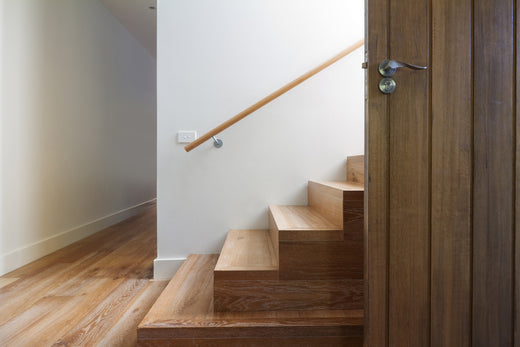European Oak vs. White Oak: What’s the Difference?
Posted by WOCA WOODCARE

Choosing the right type of wood for your flooring can feel like trying to find your way through a forest full of options. Two species that often come up during the decision-making process are European Oak and White Oak. But what's the difference, and how do you choose between the two woods?
Before we look into the specifics, it helps to understand the broader picture. Both European and White Oak are hardwood species known for their durability and strength. They also have similar (and highly sought-after) grain patterns, which contribute to a beautiful, classic look. However, we will look at some key differences to be aware of when deciding between European Oak and White Oak.
Differences in Origin and Appearance
The first key difference between European Oak and White Oak lies in their respective origins and subtle differences in appearance.
European Oak:
European Oak, as the name suggests, originates from various European countries. It's often characterized by a more rustic or classic look, thanks to a more irregular, wavy grain pattern and slightly darker shade. The aging process can also give European Oak a beautiful patina over time, though this can take years to develop.
White Oak:
Native to North America, White Oak has a more linear, straight-grain pattern that gives it a more modern, uniform look. It's slightly lighter in color compared to European Oak and is known for its incredible resistance to rot, which is due to its closed cellular structure.

Evaluating Hardness and Durability
When it comes to hardness and durability, both species make for great flooring options, but (again) there are some slight differences to be aware of.
European Oak:
European Oak has a slightly lower hardness rating compared to White Oak. However, this minor difference is generally not a decisive factor for most homeowners, as European Oak still offers good durability and resistance.
White Oak:
White Oak is slightly harder compared to European Oak, which results in slightly improved resistance to scratches and dents. The hardness level could be a determining factor if you're planning for areas that will see heavy traffic or if you have large pets.
Assessing Price and Availability
There are also factors like cost and availability that could influence your decision between European Oak and White Oak.
European Oak:
European Oak, as the name implies, is imported into North America, which typically makes it slightly more expensive than White Oak. However, it’s important to note that the price can vary based on the wood's quality.
White Oak:
White Oak, because it’s domestic to North America, is much more abundant, readily available, and is generally a slightly more affordable option. Again, grade and width considerations apply, and premium quality in either wood might increase the price tag.
Choosing Between European Oak and White Oak
Ultimately, choosing between European Oak and White Oak will depend on your personal preferences and needs. If you're looking for a classic or rustic aesthetic and don’t mind spending a bit more for a unique appeal, European Oak might be your preferred choice.
However, if you love a more uniform, modern look, require high durability, or need to be mindful of your budget, White Oak could be the better option for you.
Bear in mind that both types of Oak make for beautiful, durable hardwood floors that hold up well against time and wear. Choosing between the two often comes down to the specifics of your situation and, as with everything, your personal preferences and sense of style. Additionally, if you are environmentally conscious, consider the Oak that is domestic to you as that will lower your carbon footprint.
Protecting Your Investment
No matter which option suits your needs, it’s important to provide proper care and maintenance to preserve the beauty and longevity of your hardwood flooring. Ready to learn more about proper wood care, the benefits of hardwood floors, and the latest trends in interior design? Keep reading for tips, how-tos, and more great information about the latest design trends from WOCA.
TAGS:
SHARE:

